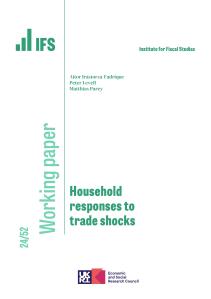Key findings
1. Teacher salaries have declined in real-terms since 2010. Most teachers will have seen real-terms salary cuts of 13% between 2010-11 and 2022-23. This is clearly much larger than the 5% real-terms cut in average earnings over the same period. This is likely to have contributed to the significant problems in teacher recruitment and retention. Salary rises of 4.3% have been proposed for 2023-24, which will just about match expected inflation and average earnings growth, but will still leave most teacher salaries about 13% lower than in 2010.
2.Teacher starting salaries have seen more rapid increases in recent years. This reflects the government commitment to deliver £30,000 starting salaries by 2024. By 2022-23, teacher starting salaries were only 5% below their 2010 level in rea-terms and are expected to be 2% lower in 2023-24.
3. Identifying the most effective teachers at hiring stage is difficult, as characteristics like qualifications, results or types of training are not strongly related to effectiveness in the classroom. Since predicting effectiveness during the hiring process is so challenging, more rigorous probation periods may be helpful in giving head teachers the chance to properly assess their staff and how they work on the job.
4. On the job, the most reliable evidence for improving teacher effectiveness supports programmes of peer-to-peer evaluation among teachers. Observing and rating two or three of a colleague’s lessons substantially improved teacher effectiveness – both among the teachers receiving peer feedback and among those giving it. Teachers can also be trained in specific approaches to teaching and pedagogy.
5. Teacher attrition rates are particularly high in the early years of a teaching career. Close to a third of teachers have left the profession within their first five years. Improved rates of pay, which the Government has committed to with its promise to raise starting salaries to at least £30,000, could certainly help. However, pay is not the only important issue for retention. Teachers in England highlight a heavy workload and having to deal with disruptive pupils as significant factors too.
6. Retaining teachers in shortage subjects and in schools serving a large proportion of disadvantaged students are also pressing issues. Evidence suggests that financial incentives, such as the levelling up premium payment, could prove effective. However, to also improve student performance it would be better to target these payments at high quality teachers.
7. Recruitment and retention issues are especially acute among teachers in the further education sector. Around 25% of college teachers leave the profession after one year compared with 15% of school teachers. Three years in, almost half of college teachers have left compared with around a quarter of school teachers.
8. On average, college teachers earn 21% less than school teachers, and the gap has grown over time. In 2010–11, the median salary (in today’s prices) was around £48,000 for a school teacher and £42,500 for a college teacher. Median pay is now around £41,500 for a school teacher and £34,500 for a college teacher. Therefore, the gap in median salaries has grown from around 14% in 2010 to 21% today.
9. Developing and retaining a high-quality teaching workforce requires adequate investment in the education system. Since 2010, both schools and colleges have experienced sharp real-terms cuts to funding levels. Between 2009-10 and 2019-20, school spending per pupil in England fell by 9% in real terms, while spending per student aged 16–18 fell by 12%.














